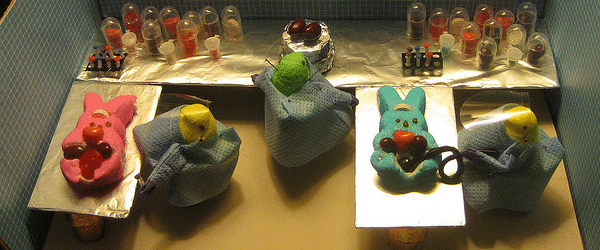As is sadly the case in many experiments, site-directed mutagenesis (SDM) does not always work the way we would like it to the first time around. Let’s discuss some of the comment problems, and the site-directed mutagenesis tips for overcoming them.
Some common problems include (but are not limited to):
- Getting too many colonies.
- Not getting any colonies.
- Getting colonies that have not incorporated the desired mutation successfully.
The most important site-directed mutagenesis tip I can offer here is to always, always, always run control reactions alongside your SDM reactions! Many kits come with the components to run control reactions side by side with your experimental ones. Use of these controls will help you narrow down where exactly your protocol is not working and will save you time and reagents in the long run.
Here are a few site-directed mutagenesis tips to help you on your way when trying to troubleshoot a bothersome reaction!
Site-Directed Mutagenesis Tips for Troubleshooting
When You Get Too Many Colonies
- Decrease the concentration of template DNA used in the PCR reaction.
- Decrease the amount of PCR product you are using in the transformation.
- Plate several concentrations of your transformed suspension (e.g. 10 µl of bacterial prep, 20 µl, 50 µl, 100 µl) and only pick colonies from a plate with well-spaced colonies.
- Increase the DpnI digestion time (e.g. 2 h instead of 1 h).
When You Get No Colonies
- Increase the amount of template DNA used in the PCR reaction.
- Increase the amount of PCR product you are using in the transformation.
- Try a temperature gradient – many PCR machines can be set up to run a variety of temperatures across the block during the program. Start by trying 3 to 4 different temperatures and optimize from there.
- Try altering the extension temperature or time, e.g. drop extension temperature to 68°C and extend at 60 seconds/kb.
- Add a little DMSO (2-8%) to disrupt base pairing and assist in strand separation in GC rich regions.
- Check that your competent cells are working with a control transformation.
- Ethanol precipitate the digested DNA and resuspend in a smaller volume before transformation.
- Clean up your DNA sample to remove salts and other substances leftover from the PCR reaction before transformation.
- Increase the concentration of MgCl2.
Colonies Forming Without the Desired Mutation
- Use E. coli host bearing dam-methylase for the template plasmid preparation, such as JM109 or DH5\alpha.
- Increase the DpnI digestion time (e.g. 2 h instead of 1 h) or increase the amount of DpnI used (but this may add to the expense of your experiment!).
- Plate several concentrations of your transformed suspension (e.g. 10 µl of bacterial prep, 20 µl, 50 µl, 100 µl) and only pick colonies from a plate with well-spaced colonies.
- Decrease the number of PCR cycles.
Still Nothing?
Redesign your primers and try again!
Redesigning your perfect primers
As we mentioned previously, site-directed mutagenesis primers should typically be around 30 bp long with the mutated site as close to the center as possible with roughly 12 bp on either side.
Make the least number of changes possible
For example, to change serine to alanine starting with a UCA codon, change it to GCA (1 change) instead of GCU (2 changes).
Aim for Symmetry
Keep your region of interest as close to the middle of the primer as possible.
Keep GC Content at Approximately 50%
Some regions are easier to work with than others for this rule, when in doubt aim for higher rather than lower GC content as you can adjust your PCR temperature setting to account for the changes in annealing/denaturing temperature that higher GC content will have.
Start and Finish Your Primer with Either Matching Gs or Cs
G and C bases bind with higher affinity than T or A, so starting and finishing your primer with GG or CC will help with the initial binding. If you can’t manage GG at both ends, try for GG at one end and G at the other.
Be careful: Don’t start with GG and finish with CC – you’ll end up with self-annealing primers!
Mutating Multiple Sites?
If the sites are close together consider using overlapping primers or partially overlapping primers, but make sure the sites are mutated in both sets of primers.
What are your site-directed mutagenesis tips for troubleshooting a tough mutation? Let us know in the comments below!
Originally published July 9, 2016. Reviewed and updated on November 27, 2020.







